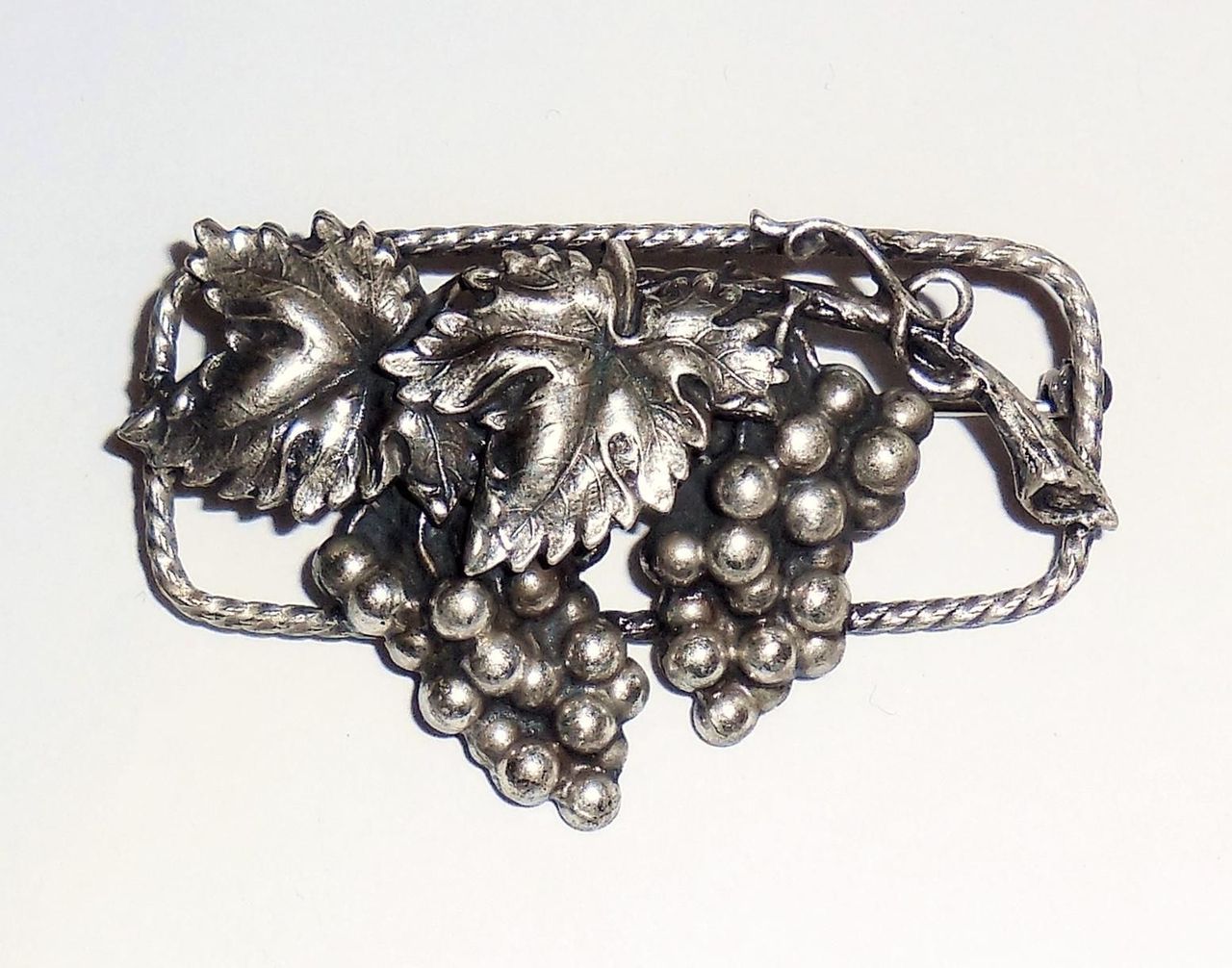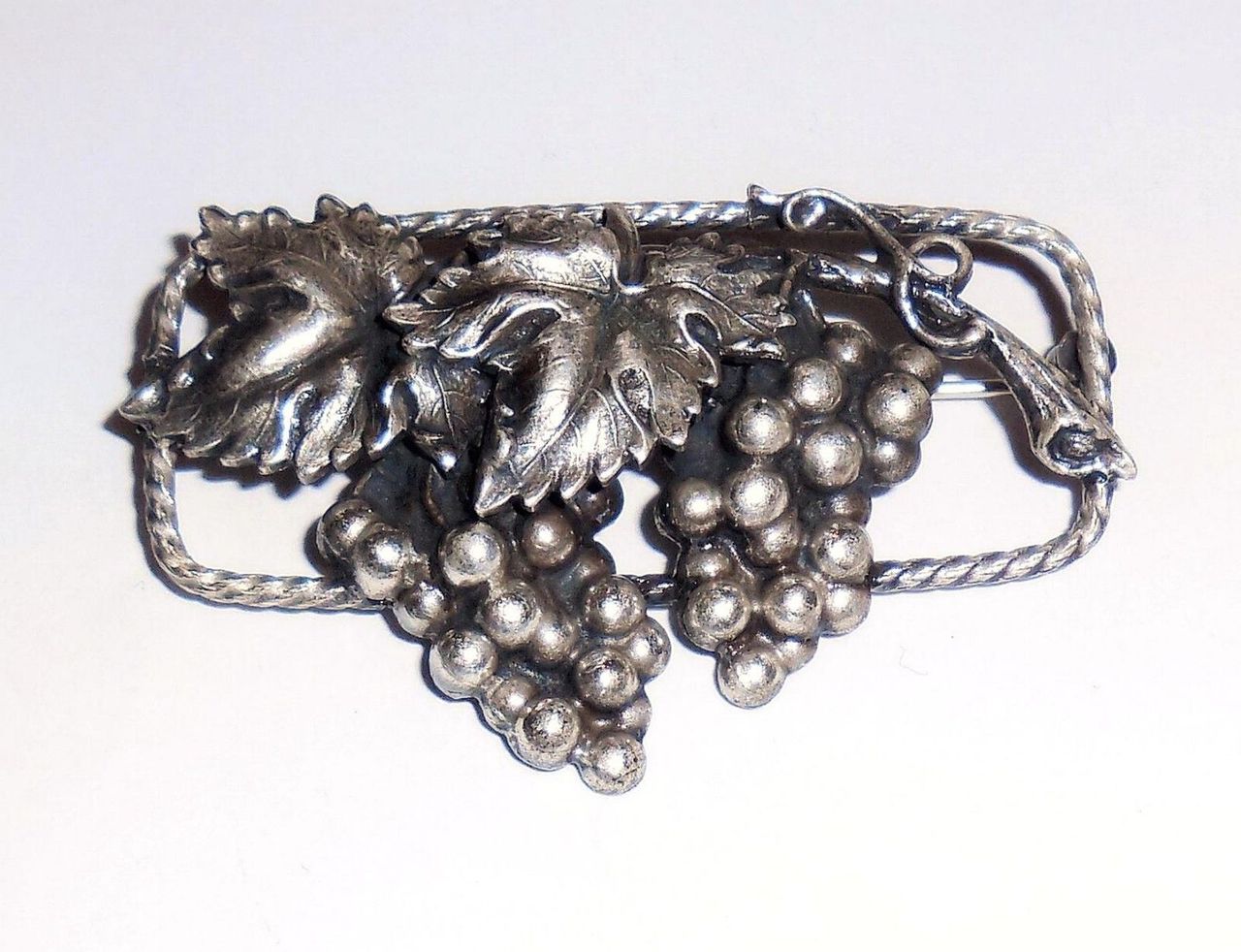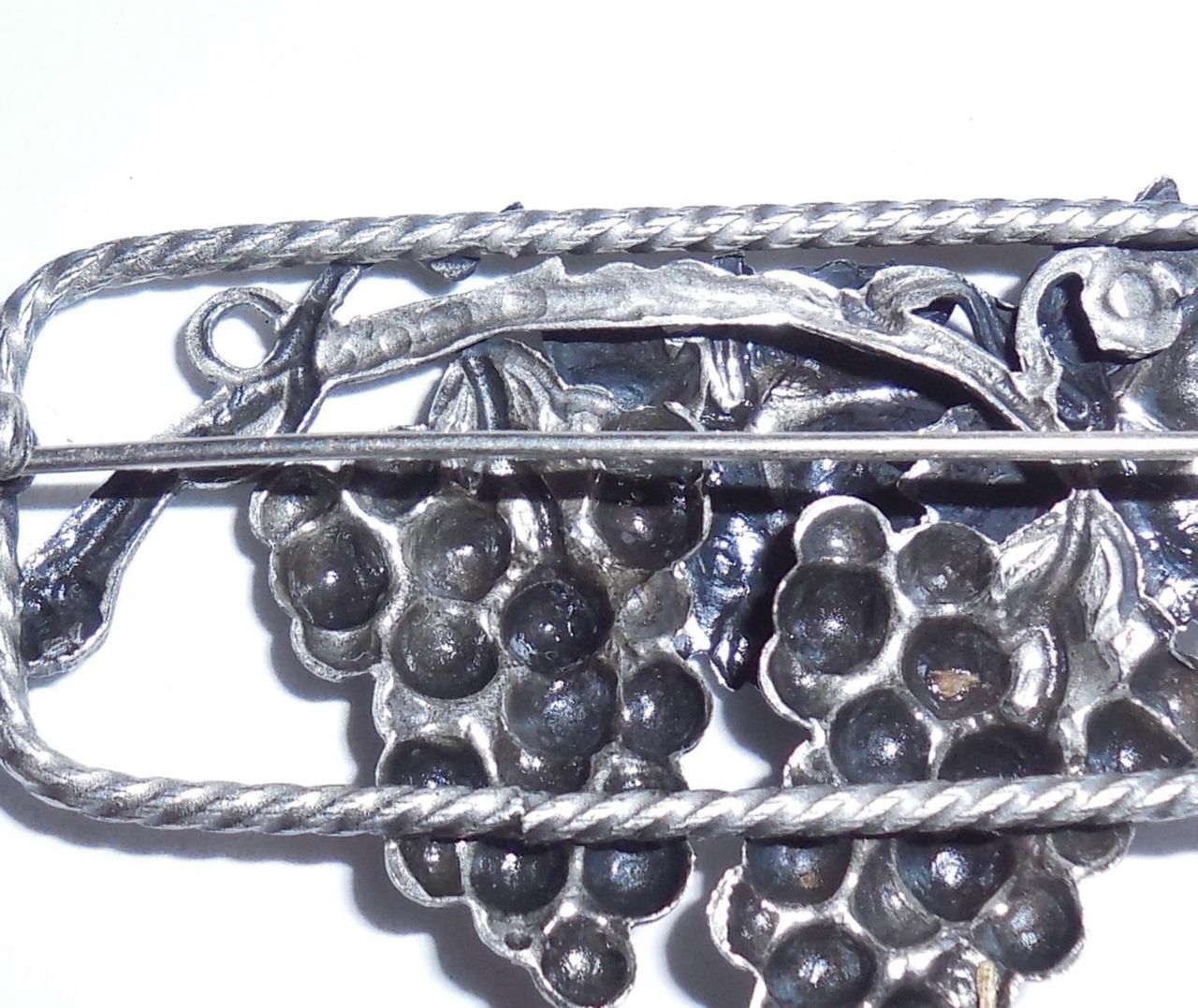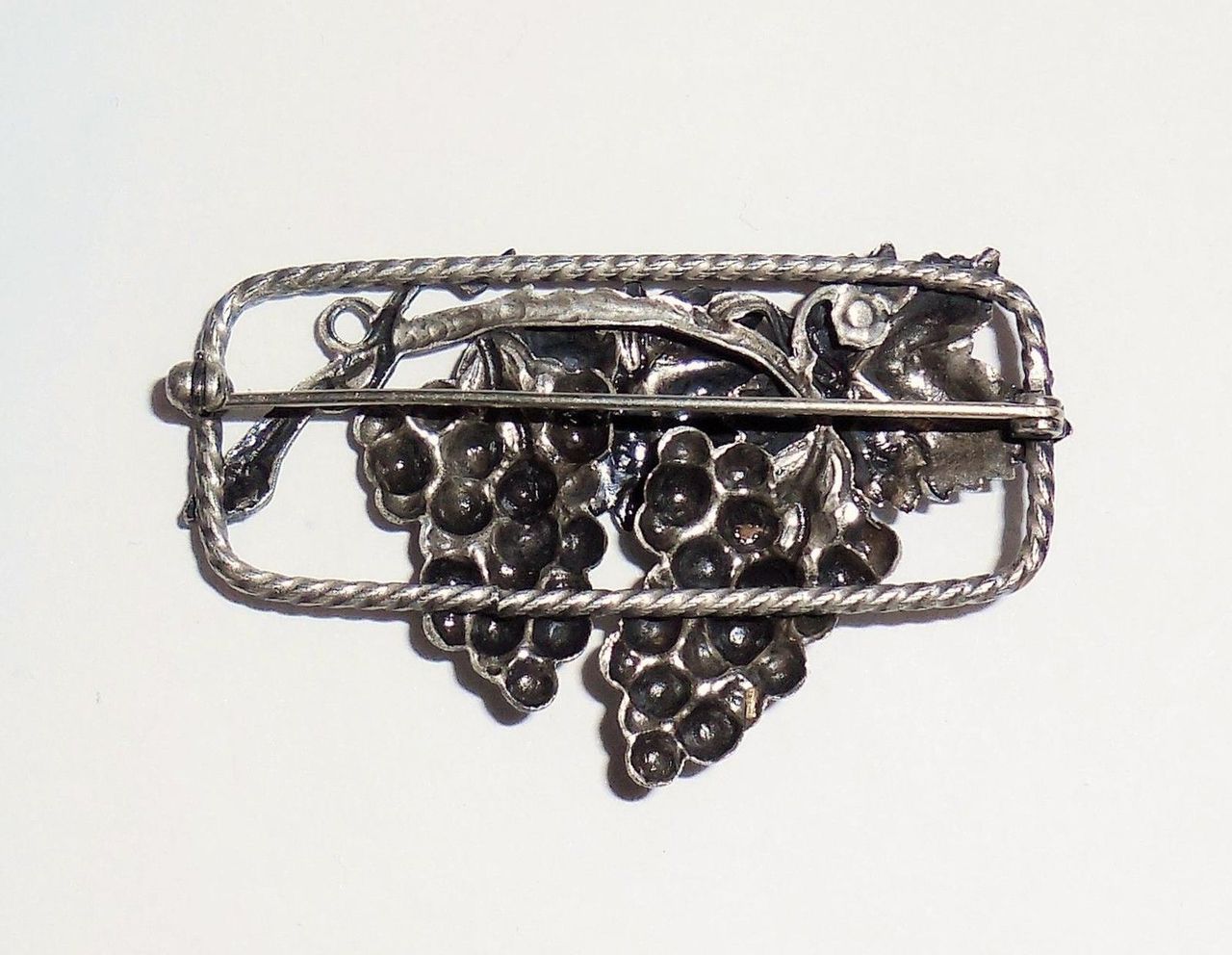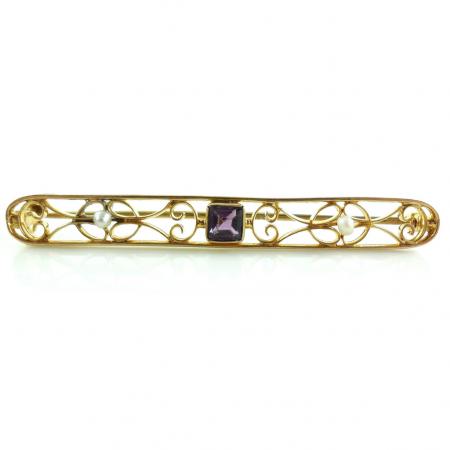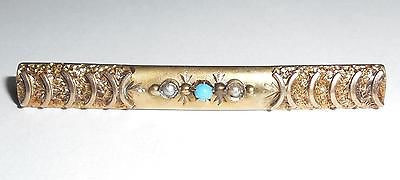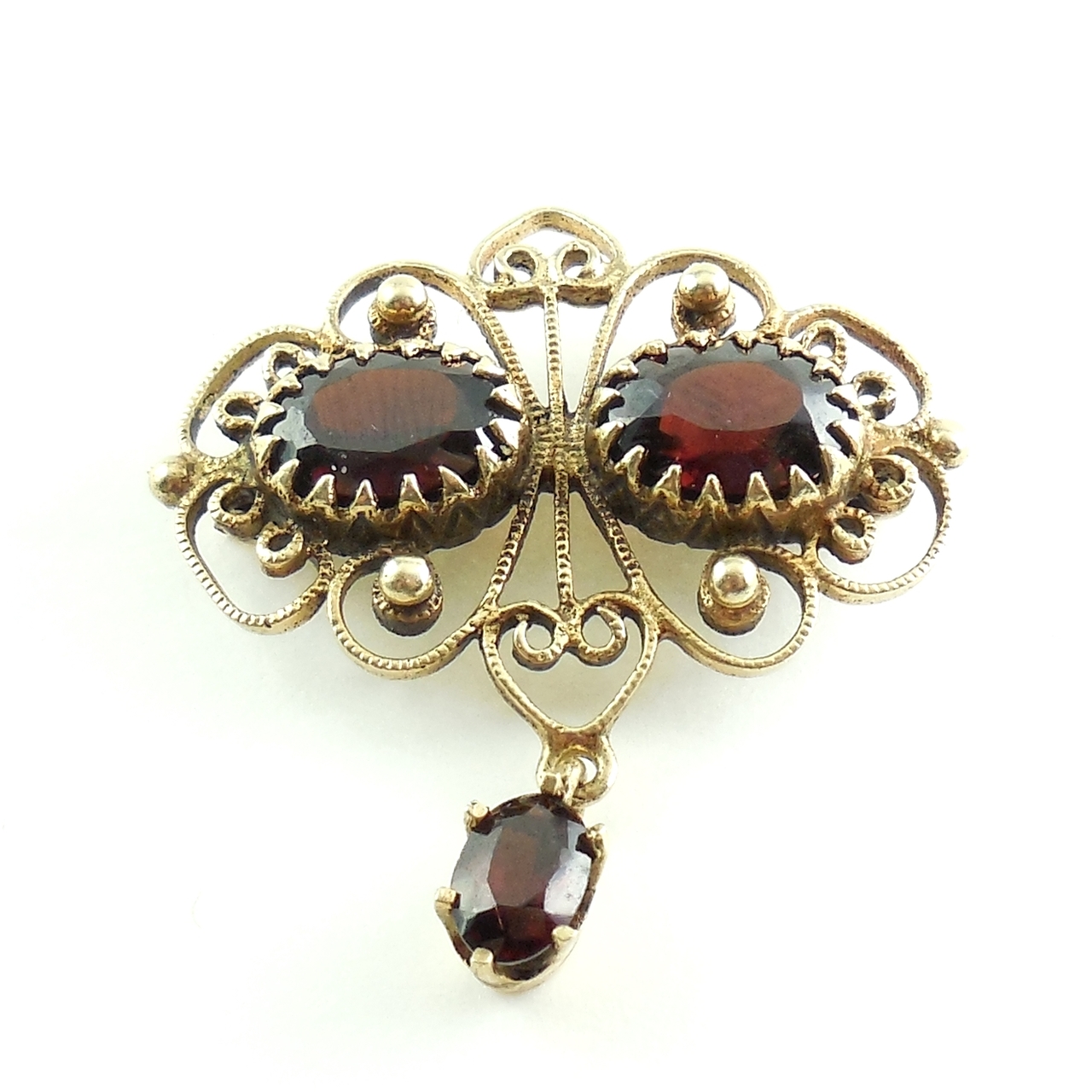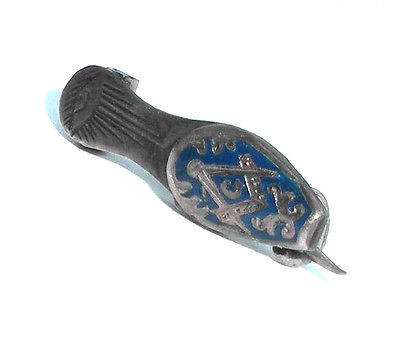Description
Antique Sterling Silver Art Nouveau Edwardian Aesthetic Grapes Pin Hallmarked, From an estate and in excellent condition. It has several worn hallmarks on the back. Additionally, it is jeweler tested and guaranteed to be solid sterling silver. Indicative of its age the bough is hand applied with a tiny handmade sterling silver nail. In as much as many collectors prefer originality this pin is completely original and has not been polished or altered in any way. Hence, having a fancy thick twisted sterling frame along with beautiful handcrafting and a textured grapes motif this is a lovely Antique Sterling Silver Art Nouveau Edwardian Aesthetic Grapes Pin for your collection.
Excellent overall condition. No dents or dings or damage or repair. Size is 2″ long East to West by 1 1/4″ wide North to South from the top of the rectangle to the bottom of the lowest grape. Overall, this is a very finely detailed well-made Antique Sterling Silver Art Nouveau Edwardian Aesthetic Grapes Pin.
Aesthetic Movement Jewelry:
The Victorian Era spanned Queen Victoria’s rule of England from 1837 until 1901. During this time, a middle class began to emerge, sparking a demand for jewelry in the mass market. This era is usually divided into several subsections: the Romantic Period from 1837 to 1861, the Grand Period from 1861 to 1880, and the Aesthetic Period from 1880 to 1901.
Jewelry of the Romantic Period (when the queen’s husband, Price Albert, was still alive) seemed to mirror the affection between the country’s rulers. Enameled serpents and snakes were fashioned into necklaces, brooches, pendants, and bracelets. Indeed, Albert’s ring to Victoria was a snake with its tail in its mouth, which was considered a symbol of love eternal.
Engagements Rings:
Others chose engagement rings of diamonds or amethysts set in platinum or gold. Sometimes diamonds were paired with pearls, rubies, emeralds, or sapphires. In so-called acrostic rings, multiple stones were used so that the first letter in the name of each stone spelled out the word “dearest.” Other rings harbored secret, hinged compartments behind the stones.
Flowers:
Flower motifs were also popular in Romantic Period jewelry. Leaves were rendered realistically in gold, while flower buds were studded with jewels. Many flower heads shivered with the movements of their wearers, thanks to a technique called en tremblant. Hands were another recurring motif, symbolizing either friendship or whatever the hands were holding.
Bracelets:
Bracelets and bangles were very big—literally. They were composed of hand-worked links; necklaces were punctuated by lozenges with enameled floral decorations at their centers. Large bangles with hinged clasps were often made out of rolled gold to produce scroll-like relief. Some of which were accented with figures or animals in silver.
Brooches:
Of course, brooches were another Romantic Period favorite. Sometimes trios of aquamarines set in gold provided a base for a swinging aquamarine pendant below. Other silver pins were shaped like birds, which were often covered with seed pearls and turquoise.
http://www.collectorsweekly.com/fine-jewelry/victorian-edwardian
